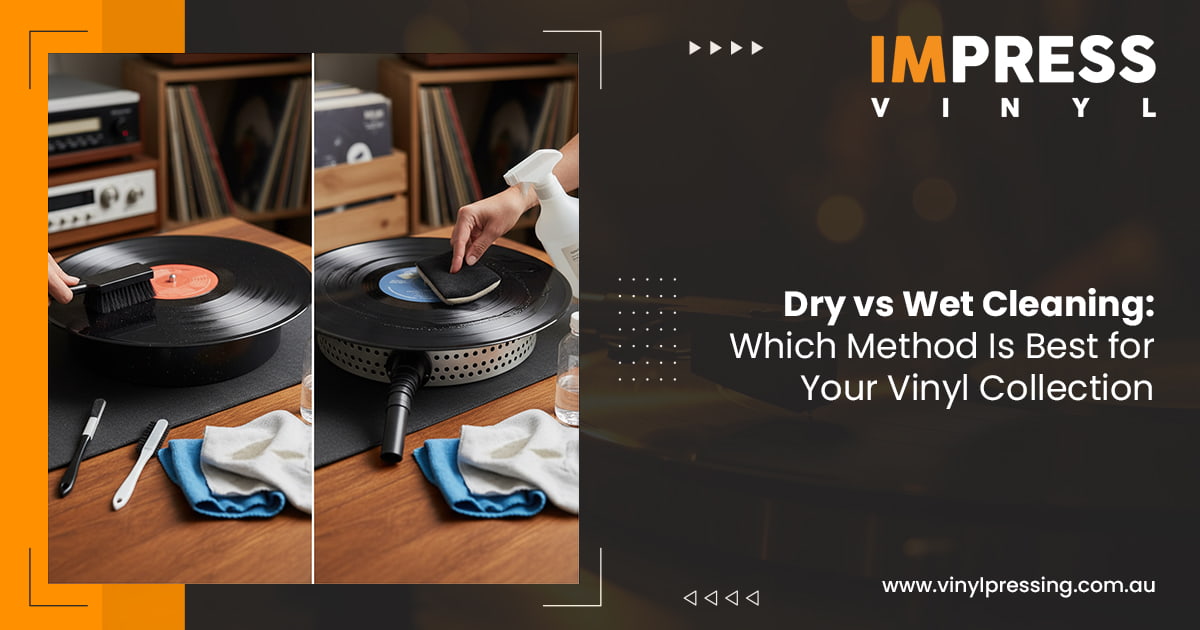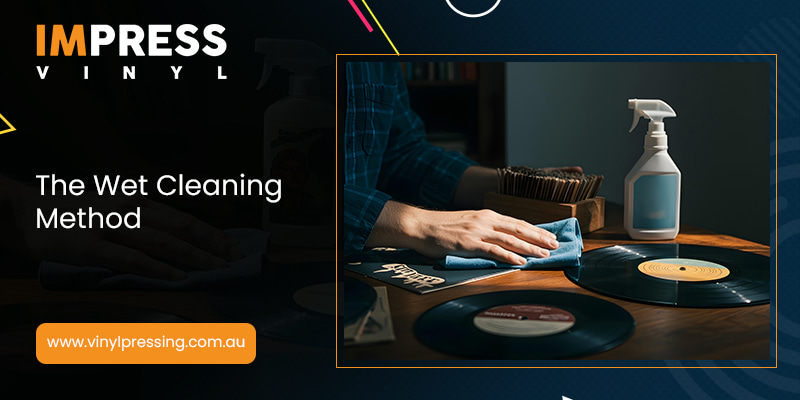Dry vs Wet Cleaning: Which Method Is Best for Your Vinyl Collection

Have you ever dropped the needle on your favorite record expecting that warm, nostalgic sound, only to hear a burst of crackles and pops? Every collector knows that frustration and the cause is often hidden dirt, static or improper care. Maintaining your records through proper vinyl record cleaning is not just about keeping them shiny; it’s about preserving that timeless analog sound.
In vinyl record maintenance, two methods dominate — dry cleaning vinyl records and wet cleaning vinyl records. Each has its strengths, techniques and ideal uses. Knowing when and how to use them can help your collection last decades while sounding as crisp as the day it was pressed. Let’s dive into the difference between the two approaches to help you master dry vs wet cleaning vinyl.
Why Cleaning Your Records Matters
Vinyl grooves are like tiny valleys that hold every beat and detail but they are also very sensitive. Over time dust oils and static start to build up inside those grooves and slowly make the music sound dull with pops and hisses. Without regular vinyl record cleaning the needle keeps pushing that dirt deeper which can cause permanent damage.
Keeping your records clean not only ensures smooth playback but also protects your stylus, maintaining that clear, warm sound. It’s not just about looks, it’s about keeping the heart of your music alive. Clean grooves means clean sound and that’s how you keep the soul of your collection safe.
The Dry Cleaning Method
Dry cleaning vinyl records is the easiest and most effective way to deal with everyday dust. It uses no liquid which makes it safe and quick for regular use. Tools like anti-static carbon fiber brushes, velvet pads and microfiber cloths help lift dust gently without leaving any scratches.
Giving your records a light brush before and after playing helps in removing dust from vinyl records and stops dirt from settling deep into the grooves. It’s a simple habit that keeps your vinyls clean, sound clear and your collection lasting longer. This not only minimizes noise but also reduces static buildup — a common cause of dust attraction.
Dry cleaning works best for:
- Regular maintenance between deeper cleans
- New or lightly played records
- Reducing static and keeping records “play-ready”
It’s perfect for surface cleaning. However, dry methods can not dissolve sticky fingerprints, mold, or oily residue from older records. For that, you will need the precision of a wet clean.
The Wet Cleaning Method

When your record shows signs of stubborn dirt or audible distortion, it’s time for wet cleaning vinyl records. This process involves using a specially formulated vinyl-safe liquid — often a mix of distilled water and mild detergent to deeply cleanse grooves.
Wet cleaning penetrates where dry brushes can not reach. By loosening oils and residue, it restores the original sound clarity and removes static charge. Many collectors use vacuum record cleaners or ultrasonic machines for this purpose, though manual cleaning with a soft, lint-free cloth also works beautifully.
Key benefits of wet cleaning include:
- Deep removal of grime, oils, and fingerprints
- Restoring clarity and reducing crackles
- Preventing mold growth in humid environments
- Extending the life of both records and stylus
The secret to safe wet cleaning is moderation — use gentle, vinyl-approved cleaners and avoid alcohol or tap water, which can cause surface damage or residue buildup. Always let the record dry fully before playing or storing it.
Striking the Right Balance
The debate of dry vs wet cleaning vinyl does not have one winner — both play vital roles in keeping your records healthy. Dry cleaning vinyl records is your everyday defense against dust, while wet cleaning vinyl records acts as your deep restoration tool.
A great care routine combines both:
- Use dry cleaning before and after every play to control dust.
- Perform a wet clean every few months or whenever sound quality dips.
- Always handle records by the edges and store them vertically in anti-static sleeves.
This balance ensures your vinyl record maintenance remains consistent and effective. Think of it as a skincare routine — regular cleaning keeps things fresh, and a deeper cleanse once in a while rejuvenates everything.
Expert Tips for Long-Term Vinyl Record Maintenance
Handle with care:
Avoid touching the surface of your records. Only hold them by their edges or through their labels to ensure no fingerprints will form.
Proper storage:
Keeping them in cool, dry, and completely dark areas, out of the reach of sunlight should be their upright position.
Stylus care:
Cleaning the turntable needle every time should be your practice to ensure that no dust is being transferred.
Use inner sleeves:
It is better to use anti-static sleeves instead of paper ones that give an edge in protection.
Check humidity:
Too much humidity creates an environment ideal for mold to grow even on clean records which is a huge concern.
By regularly doing vinyl record cleaning and adopting these habits, you will not only preserve your music but also enhance the quality of your entire listening experience.
Conclusion
A really clean record doesn’t just sound quiet between songs — it makes the music feel alive. The bass is more powerful, the vocals feel warmer, and every note comes in front of us and is very vivacious. Dry cleaning vinyl records keeps the most played ones in perfect condition while wet cleaning records revive the old or ignored ones. Doing both is the best way to take care of your collection and keep it sounding great.
Next time you put the needle down, just let it slide over a clean groove smoothly. Removing dust from vinyl records is not simply cleaning — it is the love of music and making every listening experience special.
Whether you’re cleaning new pressings or restoring vintage classics, remember that every record deserves the best care. Impress Vinyl provides quality vinyl record pressing in Australia, helping artists and collectors keep the magic of analog music alive.